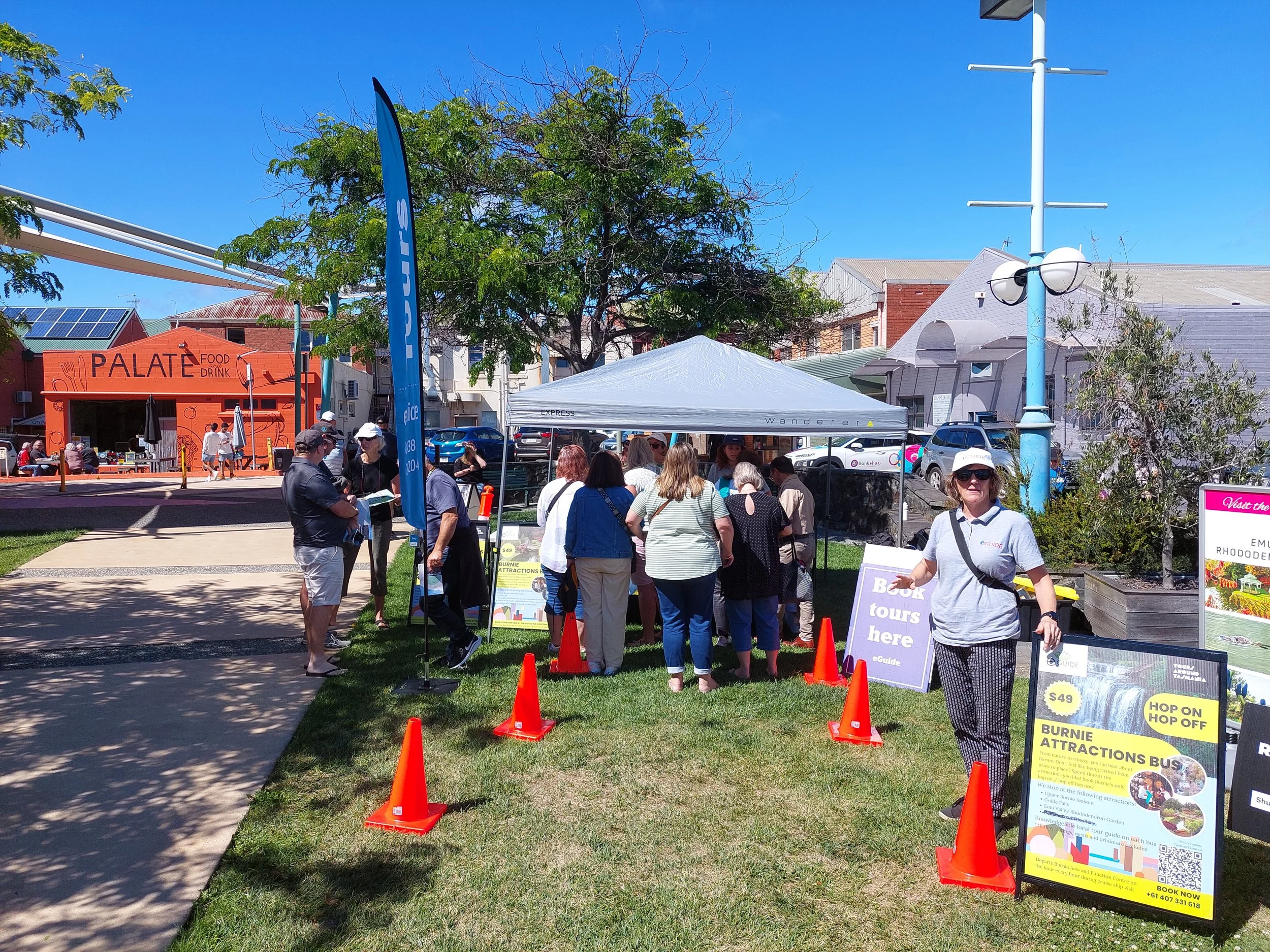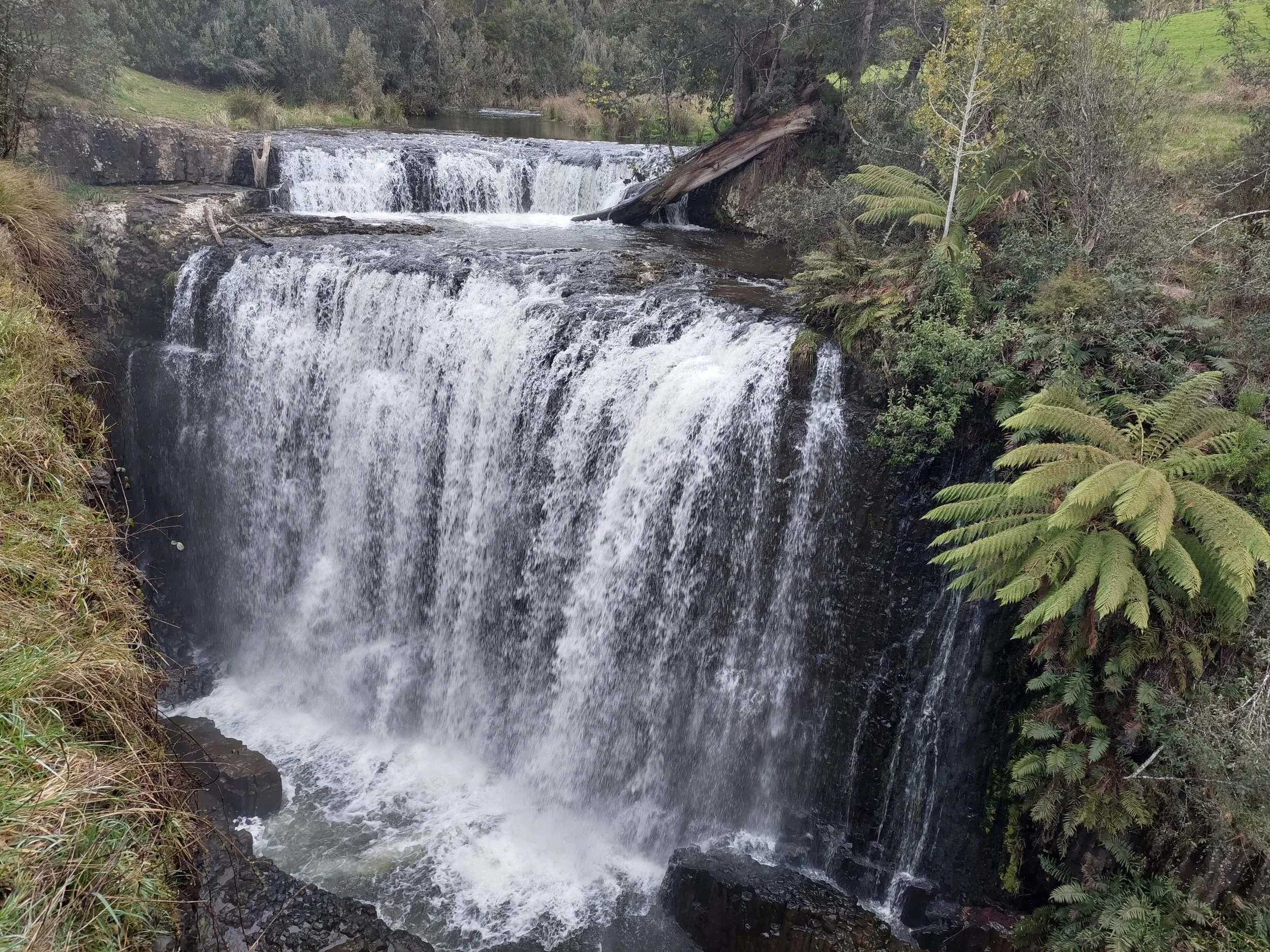BOOK CLICK HERE
Includes entrance fees
Top Shore Excursion with Scenic Views and Worry-Free Return
Worry-Free Return: Our standby backup vehicle guarantees you’ll make it back to your cruise ship with time to spare, no matter what.
Expert Local Guide: Learn from our knowledgeable guide who shares deep insights into Burnie and Tasmania's northwest coast.
Scenic Viewing Stops: Enjoy breathtaking views from the Upper Burnie Lookout and visit picturesque sites like Emu Valley Rhododendron Gardens (Entrance fees included), and Penguin.
Short, Immersive Stops: Perfectly timed visits to key attractions allow you to experience the best of Burnie in a leisurely, enriching way.
Best Value Shore Excursion: The most popular Burnie shore excursion among cruisers, offering a comprehensive experience and exceptional value.
Burnie Attractions Bus Shore Excursion
Duration: 3 Hours | Comfortable Guided Bus Tour | Cruise Ship Friendly
Experience the very best of Tasmania’s northwest coast in one easy, scenic, and comfortable journey. Our Burnie Attractions Bus Shore Excursion is the perfect way to explore the region’s highlights during your time ashore—with a knowledgeable local guide, small group comfort, and spectacular stops that showcase the natural beauty, culture, and charm of this special part of Tasmania.
Designed especially for cruise passengers, this 3-hour tour gives you a taste of everything—from coastal vistas and waterfalls to botanical gardens and charming villages. With multiple departures timed to suit ship arrivals, and guaranteed on-time return to port, it’s the most convenient and enriching way to see Burnie and its surrounds.
🌊 Tour Highlights:
Guide Falls
Next, we head inland to discover Guide Falls, a picturesque waterfall nestled in a peaceful forest setting. A short and easy walk takes you to the upper viewing platform, where you can take in the soothing sights and sounds of the falls. It’s the perfect place for a quick photo, a breath of fresh air, and a taste of Tasmania’s natural beauty.
Emu Valley Rhododendron Garden
A true botanical treasure, the award-winning Emu Valley Rhododendron Garden spans 11 hectares and features a vibrant collection of rhododendrons, azaleas, and other exotic and native plants. Wander through garden paths, scenic bridges, and peaceful glades. You might even spot a shy platypus in one of the quiet streams! This garden is a highlight for nature lovers and photographers alike, offering both serenity and spectacular scenery.
Hilltop Vista Point – Upper Burnie Lookout
We’ll make a short stop at the Upper Burnie Lookout, a hilltop vantage point with sweeping views across the city, the bustling port, and the wide blue waters of the Bass Strait. On a clear day, it’s the perfect place to capture that iconic photo of your cruise ship docked below!
Charming Village of Penguin
To wrap up our journey, we visit the delightful seaside town of Penguin. With its laid-back coastal vibe, scenic beachfront promenade, and the famous Penguin sculpture, this quick stop offers a fun and fitting end to your Tasmanian adventure. Take a few minutes to stroll, snap a few photos, and enjoy the charm of this much-loved town before heading back to Burnie.
Why Choose This Tour?
✅ Perfect for Cruise Ship Schedules – Timed departures and guaranteed return
✅ Local Expert Guide – Friendly and informative commentary throughout
✅ Comfortable, Scenic Transport – Relax and enjoy the view in a well-appointed bus
✅ Small Group Experience – Personalised, unhurried, and easy-paced
✅ Top Destinations in One Tour – A beautifully curated itinerary of the region’s best
Book Now
Spaces are limited and fill quickly on cruise days.
Book your seat now and discover the natural charm, friendly towns, and spectacular landscapes of Tasmania’s northwest coast. This is the best value shore excursion in Burnie—offering more in less time, with comfort, convenience, and unforgettable views.
Questions or group bookings?
Email: david@eguide.com.au





